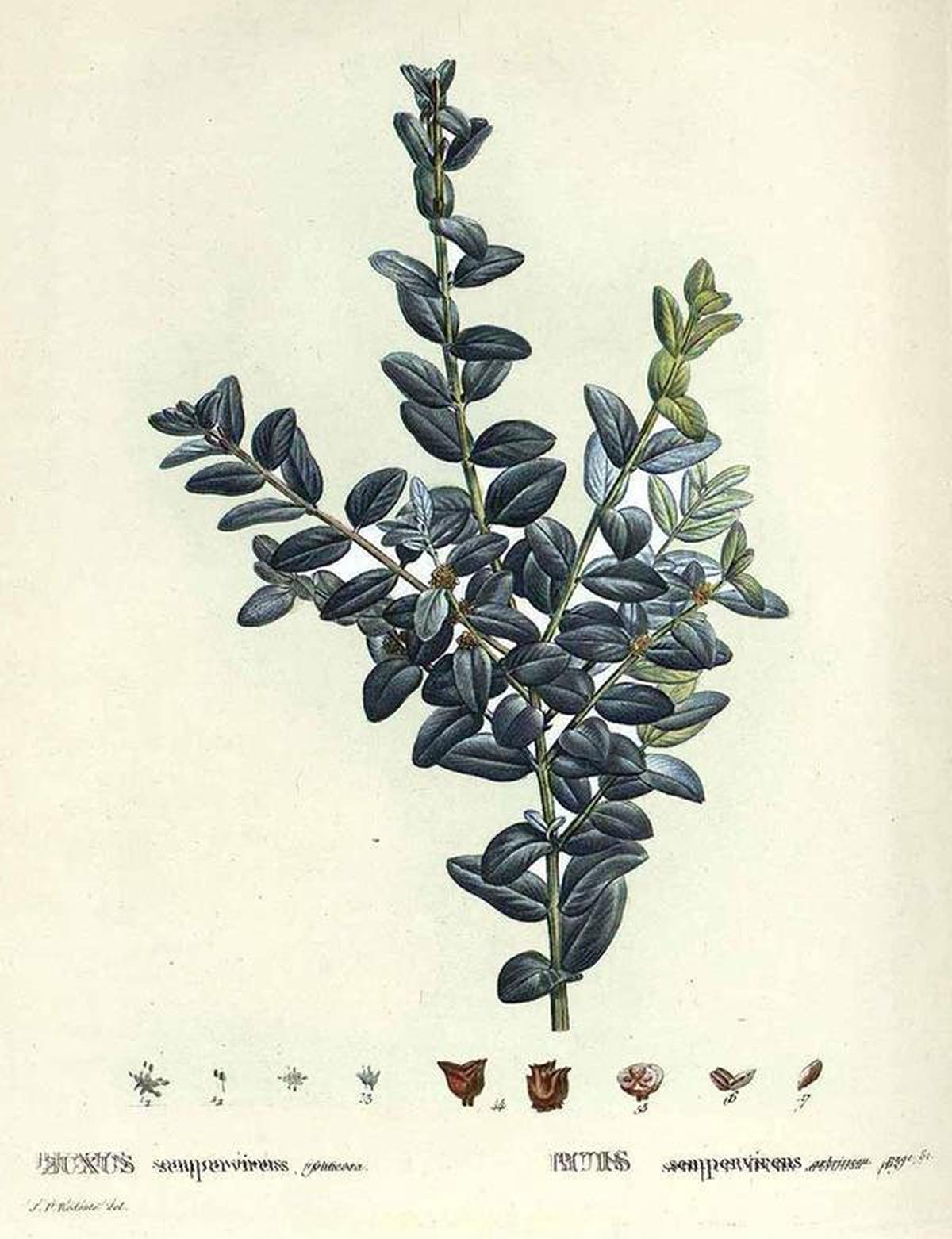Buxus sempervirens L.
BuxaceaeEl boj es una planta bien conocida por las culturas mediterráneas. Su nombre específico sempervirens -siempre verde- hace alusión a la persistencia de su follaje. Como tantas plantas sempervirens, para los griegos y romanos el boj simbolizó la aspiración a la vida eterna. Su madera es muy dura y apreciada en la fabricación de instrumentos matemáticos o musicales. El boj es sobre todo usado como seto de gran duración por su longevidad de hasta 600 años. Junto con el mirto, es una de las especies favoritas que usaron los antiguos romanos en el desarrollo del ars topiaria, disciplina de la jardinería clásica consistente en realizar esculturas vegetales con formas geométricas o de animales. Esta técnica fue vuelta a poner de moda en la Europa del siglo XVI al hilo de un movimiento cultural de recuperación consciente de la cultura grecolatina, el Renacimiento. En el Real Alcázar de Sevilla, el Jardín de las Damas fue decorado en época de Felipe II con figuras de boj que representaban los emblemas de las Órdenes Militares y así aparecen en los planos existentes de estos jardines del Real Alcázar de mediados del XVIII. Dichos escudos del Jardín de las Damas y los motivos y dibujos vegetales hechos de matas de boj de otros jardines como el de la Gruta embellecían y dotaban de un aire fantástico y misterioso a los jardines. Labores de boj como estas fueron definidas en 1788 por el ilustrado conservador de los Alcázares Francisco de Bruna como lo más primoroso que hay en ellos.
Procedencia
Europeo/MediterráneoCalendario
Hábitat
Morfología
 Arbusto
Arbusto
 Ovoidal
Ovoidal
 Simple
Simple
 Ovada
Ovada
 Elíptica
Elíptica
 Opuesta
Opuesta
 Entero
Entero
 Cuneada
Cuneada
 Obtuso
Obtuso
 Perenne
Perenne
